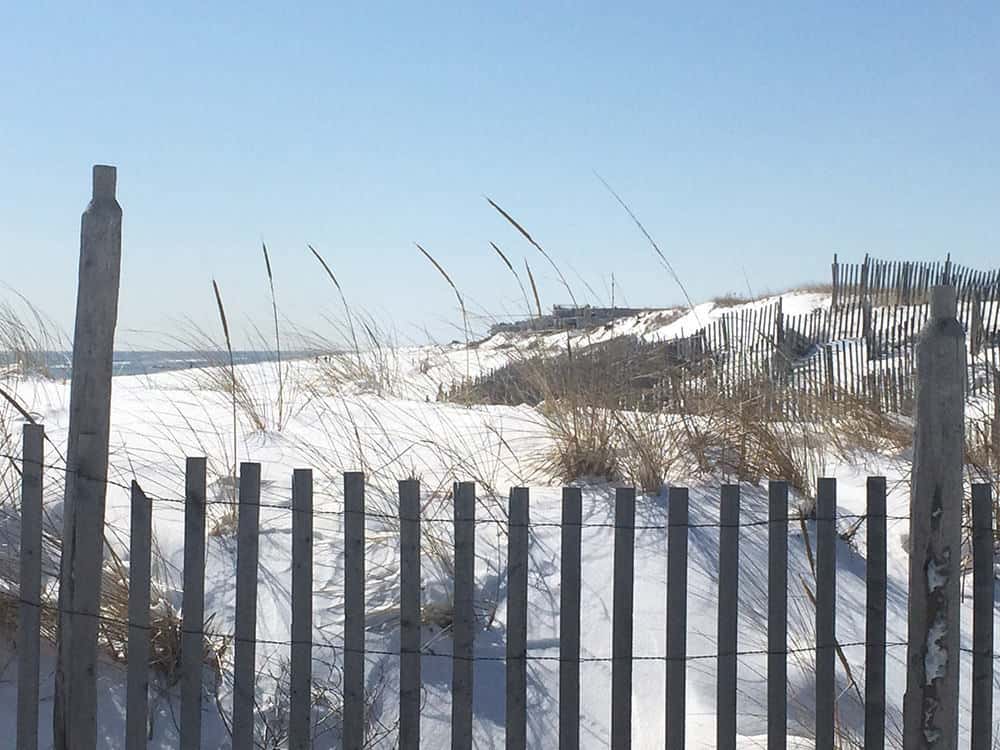
LONG BEACH ISLAND – The Department of Environmental Protection has begun the process of repairing beaches and dunes in the southern Long Beach Island area. On Jan. 18, the project commenced, which is meant to dredge sand to create a safe boat channel for the Little Egg Inlet and replenish the beaches from Holgate to Beach Haven.
This project was launched by the DEP’s Division of Coastal Engineering and Oak Brook, Illinois based Great Lakes Dock and Dredge Co. Costing $18.4 million, it is partially funded by the DEP’s Shore Protection program.
The project aims to replenish beaches damaged by previous storms, such as the nor’easter of January 2016, as well as make the Little Egg Inlet safer. This inlet provides access to the Little Egg Harbor portion of Barnegat Bay and Great Bay.
According to a DEP press release dated Jan. 30, the project “is utilizing sand from the southern portion of the inlet to repair beaches and dunes in Holgate and Beach Haven. The inlet is a major thoroughfare for recreational and commercial fishing boats between southern Long Beach Island and Brigantine.”
“This project is designed to have the multiple benefits of restoring beaches that are economically vital for shore tourism and storm protection while making it safe for boaters to again use Little Egg Inlet,” said David Rosenblatt, DEP’s Assistant Commissioner for Engineering and Construction. “We look forward to having the project completed in time for the next tourism and boating season.”
Despite these benefits that Rosenblatt points out, Jeff Tittel, Director of the New Jersey Sierra Club does not agree that the project will help.

“Dredging will cause bigger waves and increase water levels and storms surges causing more flooding in bay. Piling sand on the beach does not protect us from sea level rise and storm surges, especially on the Bayside. We should not be sacrificing one part of the island for another,” he said. “Opening up the channel will cause bigger waves and more bay flooding. The dunes cannot protect us from sea level rise and storm surges nor will it protect the people on Long Beach Island.”
Tittel addresses these issues relevant to climate change, citing that the DEP is not recognizing climate change and the potential affects it may have.
“The irony is that at the same time the DEP is building dunes, they are proposing more development on the coast. Dunes are good but DEP policies are a disaster waiting to happen. It is important to require dunes as we restore and rebuild our beaches,” said Tittel.
Working alongside the US Army Corps of Engineers and Brigantine, the DEP plans to use 755,000 cubic yards of sand from the Brigantine Inlet to help repair and restore the damaged shores. “Brigantine Inlet is not a navigation channel but has accumulated large shoals that can be utilized as a “borrow” area to provide sand for beaches and dunes,” it stated in the release.

“Just pumping sand on the beach is a waste of money and hurts the environment. With recent storms hitting Long Beach Island, we’ve seen the replenished beach projects by the Army Corps and DEP have already failed,” explained Tittel in response to this solution. “Unless we build dunes appropriately and restore marshes and tidal wetlands, they cannot protect our coast against beach erosion or protect property from storm surges.
The Army Corps of Engineers is provided $9.8 million in funding to the project, leaving the rest to be shared between the DEP and the town.
“The Little Egg Inlet project will clear a mile-long portion of the previously marked channel that is 24 feet below mean sea level, using this sand to restore beaches in Beach Haven and Holgate on Long Beach Island,” it stated in the release. “The Dredge Texas is working in conjunction with two large booster pumps to pump sand onto beaches.”
The project will repair beaches and dunes between 14th Street and Roosevelt Avenue in Beach Haven and then move on to Rosemma Avenue in the Holgate, working southward to the Forsythe National Wildlife Refuge border.
The entirety of the dredging project is expected to be completed by mid-march. Each of the municipalities will be re-establishing sand fences, crossovers, and dune grass once the contract work and demobilization is completed.







